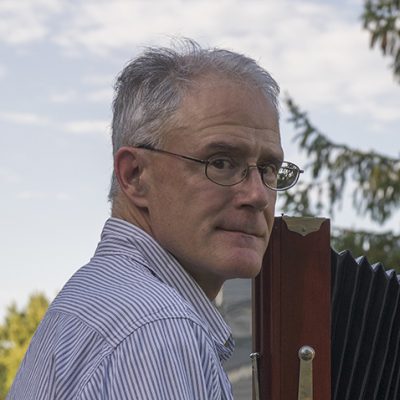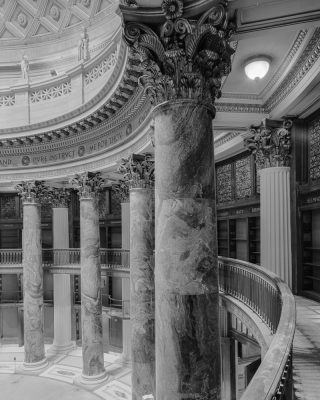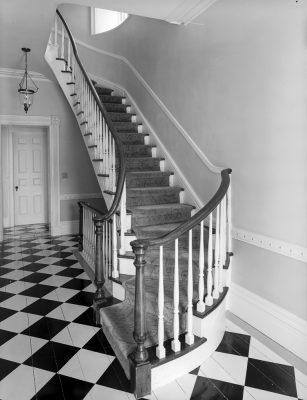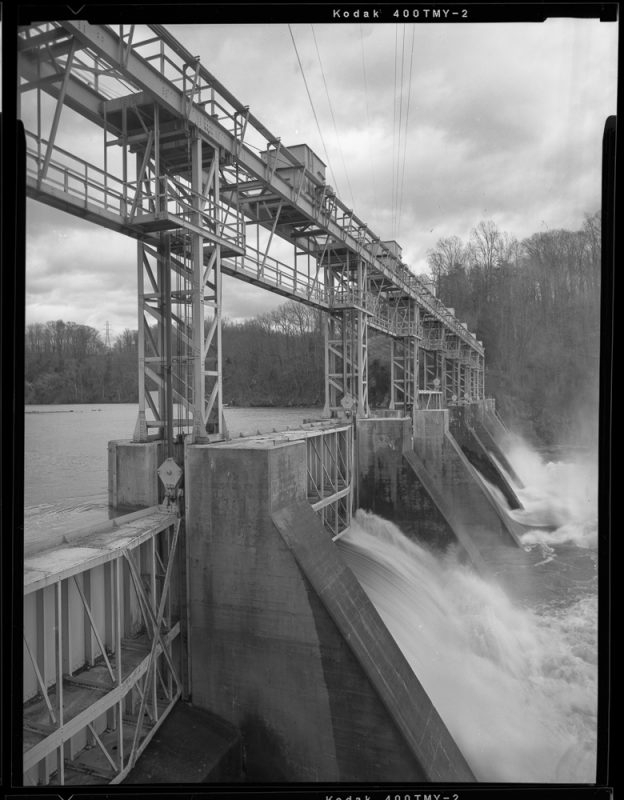Ask a consulting historian: Bruce G. Harvey
11 October 2016 – editors

Consulting historian Bruce G. Harvey. Photo credit: Bruce G. Harvey.
Bruce G. Harvey is an independent consulting historian and documentation photographer based in Syracuse, New York. A consultant for more than twenty years, his work includes a wide range of cultural resources projects, including National Register evaluations, administrative histories, cultural resources agreement documents, and Historic American Building Survey/Historic American Engineering Record (HABS/HAER) documentation that involves historic narratives and large-format photography.
Describe how you first become interested in history, as well as your education and training.
I went to college as an environmental sciences major, but realized in my freshman year that with an interest in museums and old things generally, history was a more natural fit. I went straight from college to the public history program at the University of South Carolina to focus on museums. I was in charge of a museum in Charlotte, North Carolina for three years after finishing my masters, but realized that I was more interested in the research and writing side of public history. So, I went to Vanderbilt University for my PhD in history, with plans of working as a public historian.
When did you start consulting?
In 1995, as I was finishing my dissertation, I started as the senior historian and architectural historian with Brockington and Associates in Charleston, South Carolina. In 2003 I became the senior cultural resources specialist for Kleinschmidt Associates, an engineering firm that specializes in hydroelectric and water resource projects, in their Syracuse, New York office. Kleinschmidt closed their Syracuse office in 2009, and my wife and I decided to stay here rather than take their offer to be relocated. I have been an independent consultant ever since.
Do you specialize in a particular field of public history?

Gould Memorial Library. Photo credit: Bruce G. Harvey.
I take on nearly any project that requires research, writing, interpretation, or photography, but primarily I’m in the cultural resource management (CRM) side of public history. A lot of my work is generated by the Section 106 review process, both as a historian and as a photographer. My projects often involve evaluating the significance of resources and their eligibility for the National Register, and I help my clients with their regulatory consultation process. This side of my business occasionally involves helping my clients to mitigate the adverse effects on important historic resources, and includes large-format photography and longer historic narratives.
Describe an average day at work.
Since my projects vary so widely, there isn’t an average day. I do little work locally, so I spend a lot of time away from home, particularly at the beginning of project when I need to conduct research, attend meetings, or take photographs. These trips will last anywhere from two days to a full week. Once I am back from the field, I will either take the days organizing materials and then begin writing, or organizing my negatives and getting ready to work in the darkroom. As an independent consultant, though, only a portion of the day is spent on billable projects, sometimes a frustratingly small portion. I also spend a lot of my time talking to clients and colleagues about possible work, writing proposals, and developing cost estimates.
How do you seek new work?
I most often secure my work as a subconsultant, working either for an engineering firm or a larger CRM firm who are then working for the prime client, whether a government agency or a larger planning or engineering firm. I have worked in this field for over two decades, and in that time I have built up relationships with both individuals and firms who recognize the value that I can bring to a project. I do occasionally respond to requests for proposals, sometimes on my own, though more frequently as part of a team.
Do you collaborate with other consultants?

Fuller House. Photo credit: Bruce G. Harvey.
Yes! That is one of the enjoyable parts of my work. I have learned over the years to incorporate my work with other consultants, including architectural historians, archaeologists, environmental scientists, and engineers. CRM is a subset of the larger field of environmental review, and for me, the most enjoyable part is to see how my work as a historian, or as a photographer, is integrated with the overall assessment or mitigation of effects for any project.
How do you handle the business aspects of your consulting work?
When I became an independent consultant in 2009, I met with a small business attorney and with an accountant to understand more about my tax requirements. With their advice, I registered my company name as a DBA (Doing Business As), rather than incorporating. The nature of my work has relatively limited exposure in terms of liability and didn’t justify the requirements of incorporation. I am covered in the name of my DBA through a general liability insurance policy, since I frequently spend time at work sites where my exposure to more expensive risk is greater. The accountant handles my annual taxes, but with his help I set up a way to track my income and make quarterly estimated tax payments. I bill my clients directly, typically invoicing at the end of a project, since most of my projects are relatively small and short in duration. For the few larger projects that I do, I work with my client to set up a schedule for invoicing. I have never had a client not pay me, but sometimes it can take a long time, since as a subconsultant several levels down from the prime client, the money can take a while to filter down to me.
Describe some of the projects you’ve recently worked on.
I recently completed the administrative history of the Missouri National Recreational River, which was a very challenging history to write given its remarkable bureaucratic complexity. I have also completed the large-format photographic documentation of three hydroelectric stations in Virginia and one in Maine, the cultural resources study of a small hydroelectric plant near Harpers Ferry, West Virginia, and a substantial expansion of a National Register historic district in Syracuse. I am currently involved in the HAER-level documentation (both written and photographic) of a Navy station in Maine, the administrative history of the Harry S Truman National Historic Site in Missouri, the evaluation of another hydroelectric station in Virginia, and a study of the urban renewal-era resources here in Syracuse.

Reusens Dam on the James River in Virginia. Photo credit: Bruce G. Harvey.
Are your large-format photographs publicly available?
All of my documentation photographs are part of mitigation projects, with the negatives and prints housed in public facilities. Typically this means they are kept either in the files of the state historic preservation office or in a local museum or archive, though two projects are in the Library of Congress. The importance of their being in public repositories, whether local or national, is vital, as these photographs often are the only community memory that is available for these important historic resources. In terms of archival stability, there is no substitute for properly processed black and white negatives. In addition, I have included samples of my photographs on my website (bgharvey.com), and on Instagram (@bgharveysyr).
~ This post is part of our “Ask a Consulting Historian” series, brought to you by the NCPH Consultants Committee. Follow the Consultants Committee on Twitter at @NCPHconsultants. You can find more “Ask a Practitioner” posts here.




Bruce, great article, and FABULOUS photographs. We’re proud to claim you as one of our alumni.
Connie Schulz, USC Public History Program, emerita
Thanks, Connie! The Applied History Program at USC provided such a great foundation. Long may the program continue!